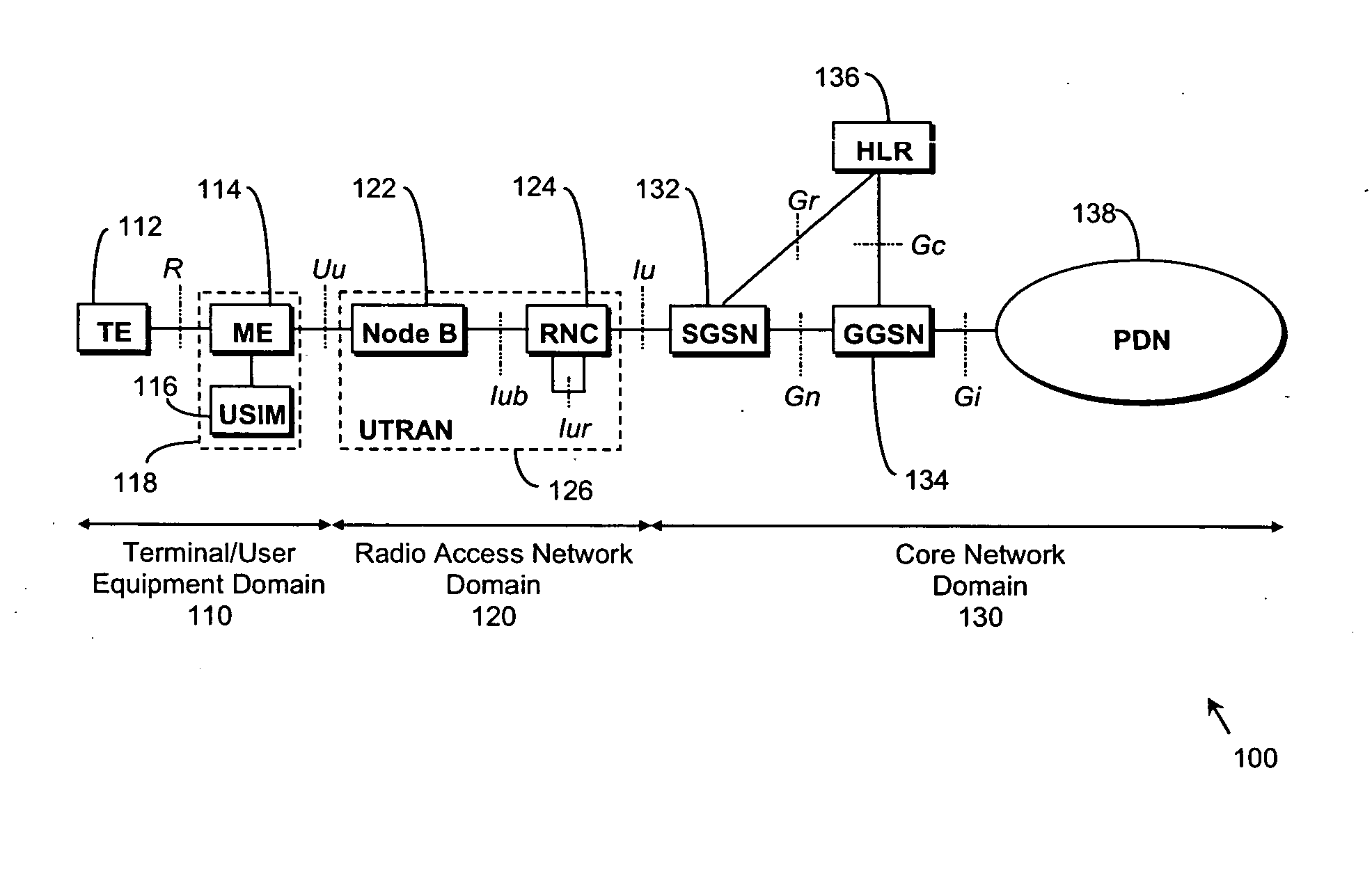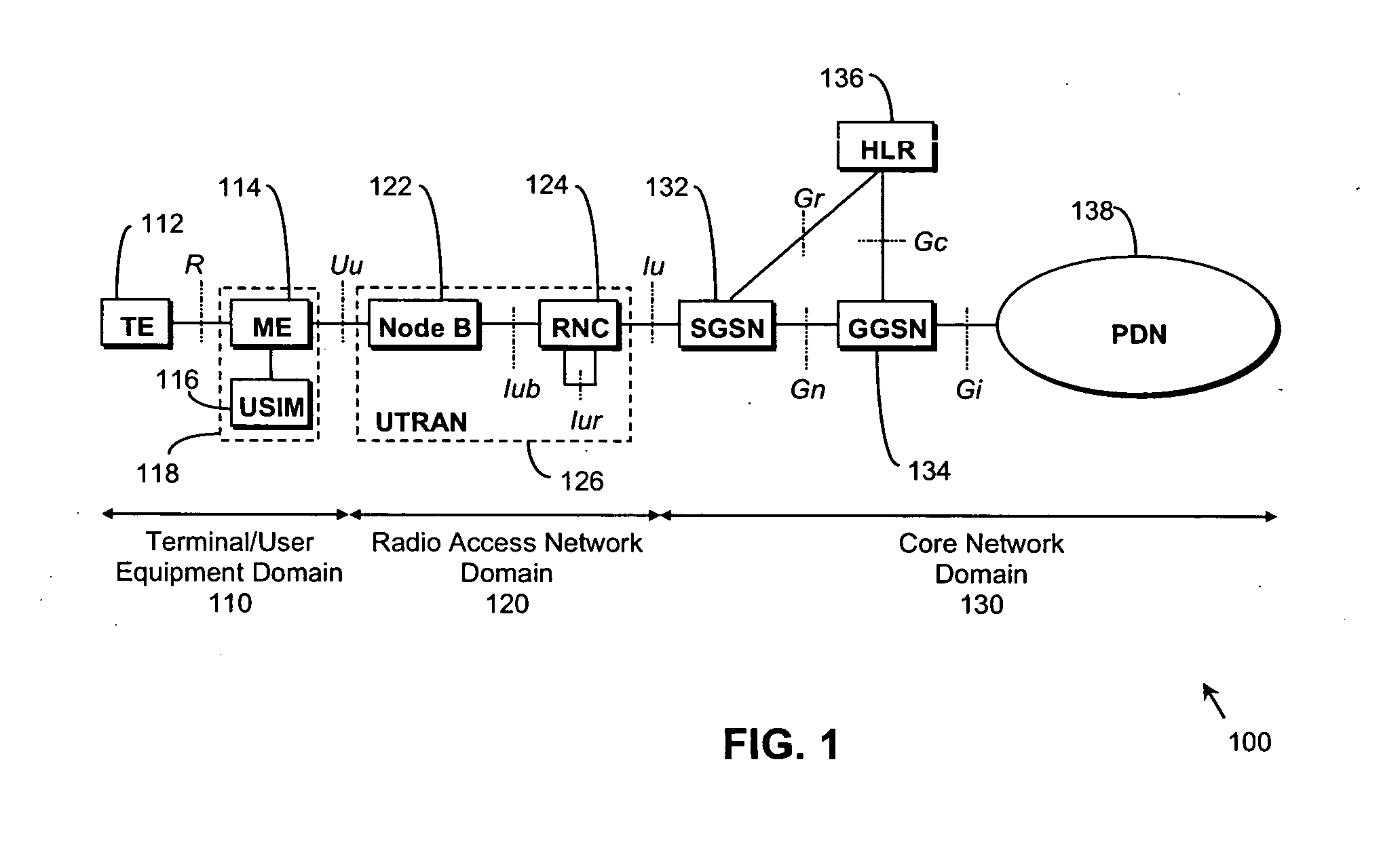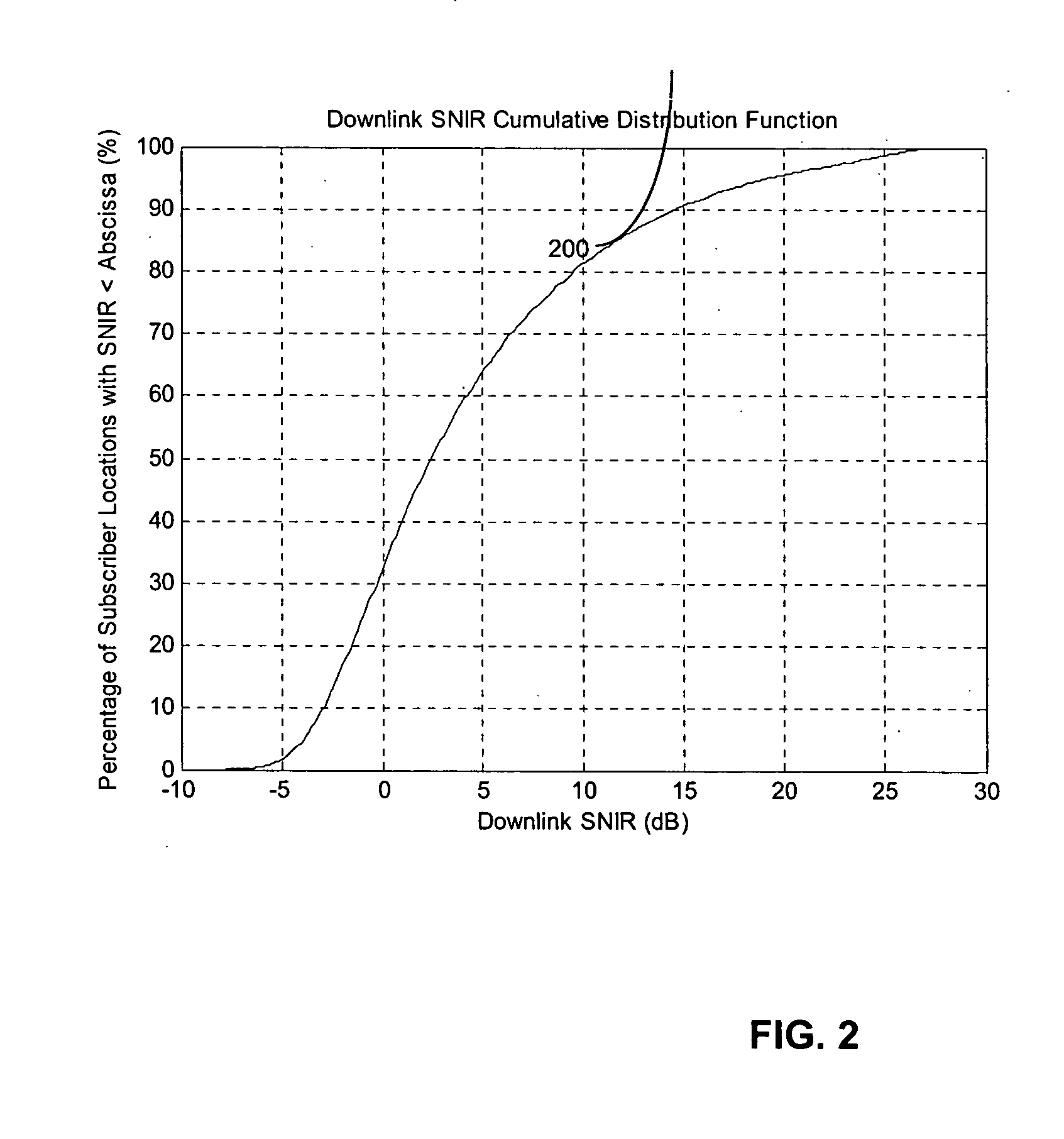Method and apparatus for improved throughput in a communication system
a communication system and throughput technology, applied in the field of communication systems, can solve the problems of increasing receiver complexity and ultimately cos
- Summary
- Abstract
- Description
- Claims
- Application Information
AI Technical Summary
Benefits of technology
Problems solved by technology
Method used
Image
Examples
Embodiment Construction
[0036] In the following some embodiments of the present invention will be described in the context of a UMTS Radio Access Network (UTRAN) system operating in TDD mode. Referring firstly to FIG. 1, a typical, standard UMTS Radio Access Network (UTRAN) system 100 is conveniently considered as comprising: a terminal / user equipment domain 110; a UMTS Terrestrial Radio Access Network domain 120; and a Core Network domain 130.
[0037] In the terminal / user equipment domain 110, terminal equipment (TE) 112 is connected to mobile equipment (ME) 114 via the wired or wireless R interface. The ME 114 is also connected to a user service identity module (USIM) 116; the ME 114 and the USIM 116 together are considered as a user equipment (UE) 118. The UE 118 communicates data with a Node B (base station) 122 in the radio access network domain 120 via the wireless Uu interface. Within the radio access network domain 120, the Node B 122 communicates with a radio network controller (RNC) 124 via the Iu...
PUM
 Login to View More
Login to View More Abstract
Description
Claims
Application Information
 Login to View More
Login to View More - R&D
- Intellectual Property
- Life Sciences
- Materials
- Tech Scout
- Unparalleled Data Quality
- Higher Quality Content
- 60% Fewer Hallucinations
Browse by: Latest US Patents, China's latest patents, Technical Efficacy Thesaurus, Application Domain, Technology Topic, Popular Technical Reports.
© 2025 PatSnap. All rights reserved.Legal|Privacy policy|Modern Slavery Act Transparency Statement|Sitemap|About US| Contact US: help@patsnap.com



